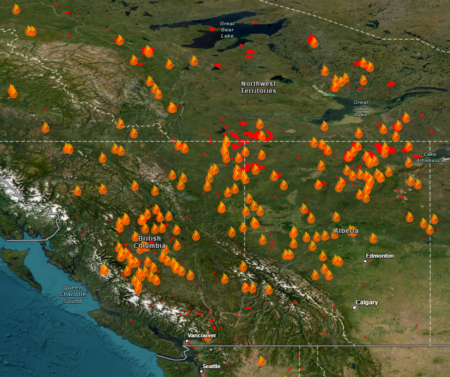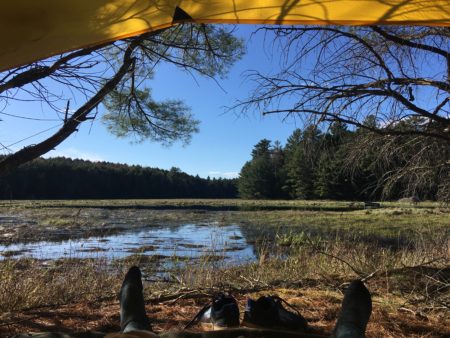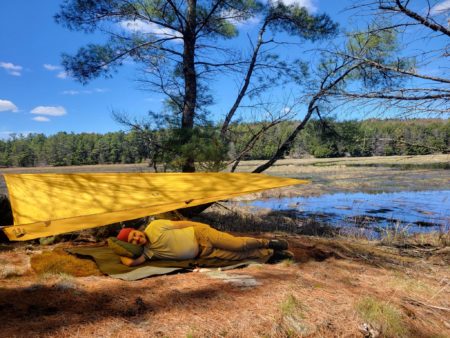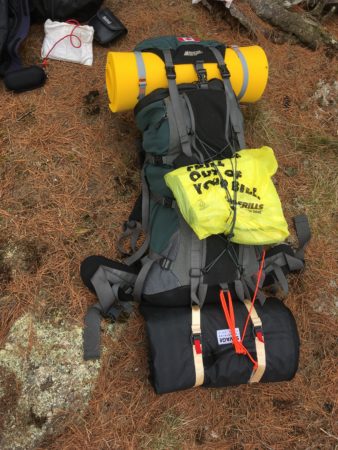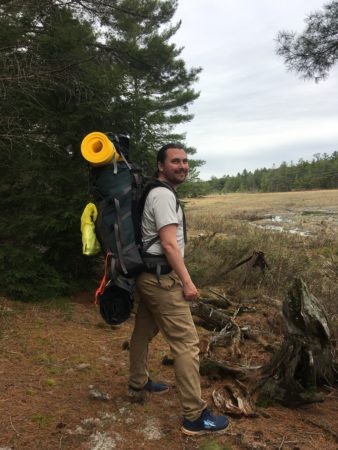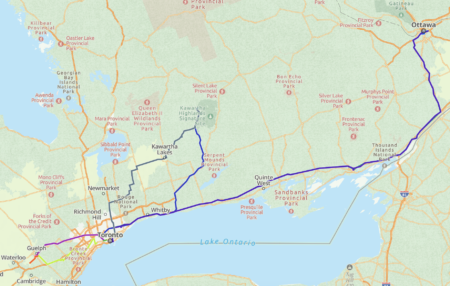Sasha and I had a fine second day of travel. We woke in our comfortable room in Grimshaw and proceeded to Hinton, where there is a disc golf course which Sasha had praised. It was indeed excellent: ringed with majestic mountain peaks and wooded so as to add to both the beauty and the challenge. My only prior experience was a very informal round on the Toronto Island with my father and some cousins several years ago, so I largely stuck to the low-risk “hammer” technique of throwing the disc sideways from over my head, reducing the chances of an early or late release sending me way out into the woods, though I did have some 9–13 throw efforts on holes with par of 3 or 4 and I did a fair bit of searching for discs that landed out of sight in the undergrowth or which were taken in surprising directions by the sometimes-strong and gusty wind. One of those undergrowth searches brought me within five feet of a startled red fox, which bounded off immediately as I carried on the search for my ‘driver’ disc. The whole effort was a lot of fun, and Sasha introduced me to an Indigenous ritual of paying the land with tobacco and thanks partway through.
After that pleasant and contrasting athletic detour, we carried on into the towering Rockies and Jasper where, after I was put off by bistros with $30–60 dishes, we got salad and sandwich ingredients and found a scenic spot by a lake on our road forward for a satisfying picnic. En route we listened to the end of The Hobbit, and I felt the wisdom of Thorin’s dying words about how a world where food and cheer are valued above hoarded gold when Sasha lent me a fleece against the mountain cold and we enjoyed a delicious meal in an unbeatable setting.
From there we continued to our day’s objective of Valemount. Every hotel and motel was $250–300 and fully booked to boot, so we called around and found a campsite for what is predicted to be a rainy night and morning. Nevertheless, I felt glad at least before going to sleep about including a night of camping in our voyage home, in part because I brought a tent mailed to Toronto for him by my mother and because I had packed super-light for the trip in everything aside from my PhD grad gift tent, sleeping pad, sleeping bag, and collapsable pillow.
As I bed down for as early a sleep as I can manage, I am grateful for this concentrated time together with Sasha, for all the songs we sang along to along the road today, and for the quality of his company and conversation. I was likewise grateful to catch up on some of the events and people from our years apart. It was heartening to hear how many friends he has made in the community where he taught for the past two years, and what a good impression he has made on people there.
During one of the spans where I had cell phone service (I do not have it in the campground) I sent a selfie of us both with soaring mountains behind to friends and family.
There is a terrible fire near Kamloops, which is part of both efficient tracks home from here, so there may yet be delays and detours. With luck we will drive to Manning Park and have a hike there before proceeding to Vancouver. We budgeted a week for what could have ideally been a 3–4 day trip, so we may have some time together in Vancouver or a hike there too, or perhaps I will be able to go all the way to Victoria with him before returning to Vancouver at the end of the month for the second part of this west coast visit — my first since the Christmas Greyhound journey in 2009. Over the course of the drive we crossed the Mackenzie, Athabasca, and Fraser rivers, a who’s who of major watercourses in western Canada.

